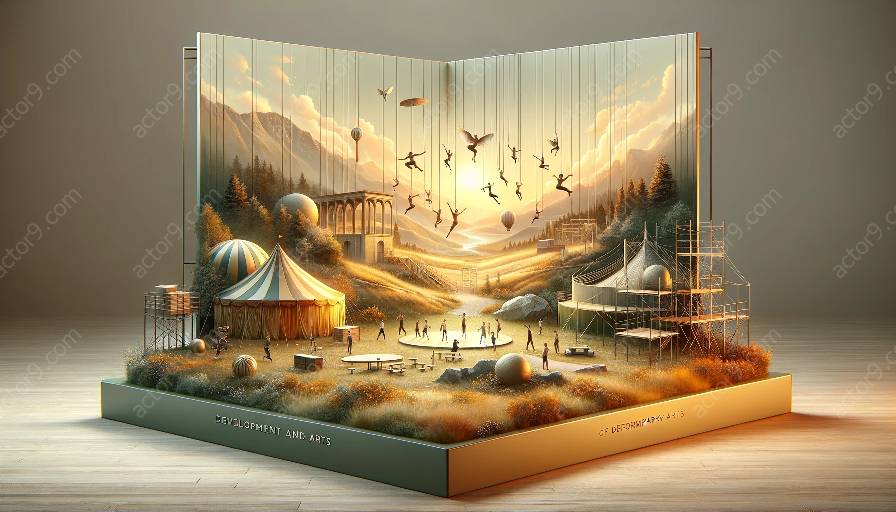When one thinks of the circus, traditional images of acrobats, clowns, and animals come to mind, but the modern circus has evolved with the integration of innovative technology. This article will delve into how technology is shaping and enhancing circus productions, its compatibility with the development and training in circus arts, and its impact on the circus arts industry.
Impact of Technology in Circus Productions
Technological innovations have greatly influenced the circus industry, revolutionizing the design and execution of performances. Advancements in lighting, sound, automation, and special effects have enabled circuses to create mesmerizing and immersive experiences for their audience.
Lighting and Visual Effects
State-of-the-art lighting systems and visual effects have transformed the ambiance of circus performances. LED screens, projection mapping, and lighting effects have enhanced storytelling and set design, captivating audiences with dynamic and visually stunning displays.
Automation and Robotics
Automation and robotics have significantly contributed to the efficiency and safety of circus acts. From aerial performances to stage setup, the integration of robotics has streamlined production processes and enabled performers to push the boundaries of their craft with innovative choreography and stunts.
Virtual Reality and Augmented Reality
The incorporation of virtual reality (VR) and augmented reality (AR) technologies has allowed circus artists to experiment with new dimensions of creativity. VR experiences offer unique perspectives for both performers and audiences, while AR overlays digital elements onto the physical world, creating interactive and captivating performances.
Compatibility with Development and Training in Circus Arts
As technology becomes increasingly intertwined with circus productions, it also plays a pivotal role in the development and training of circus artists. The integration of innovative technology in the learning and practice of circus arts offers numerous benefits:
- Enhanced Safety: Modern technology has introduced safety features and equipment, minimizing risks for performers during training and live performances.
- Specialized Training Tools: Virtual training simulations and motion-capture technology provide circus artists with advanced tools for mastering complex maneuvers and techniques.
- Learning Platforms: Online platforms and mobile applications offer accessible resources for aspiring circus artists to access tutorials, collaborate with mentors, and showcase their skills.
Impact on the Circus Arts Industry
The integration of innovative technology has not only transformed the artistic aspects of circus productions but also reshaped the business and operational facets of the industry:
- Engaging Diverse Audiences: Technology has enabled circuses to reach new audiences through interactive digital marketing, live streaming, and virtual experiences, expanding the reach of the circus arts worldwide.
- Operational Efficiency: From ticketing systems to backstage management, technology has streamlined operational processes and improved overall efficiency in circus productions.
- Sustainable Practices: The adoption of eco-friendly technologies and sustainable production practices aligns the circus industry with environmental conservation efforts, contributing to a more responsible and ethical approach to entertainment.
In Conclusion
The integration of innovative technology in circus productions is revolutionizing the art form, providing new creative possibilities for circus artists, and enhancing the overall experience for audiences. As technology continues to advance, the circus arts industry will undoubtedly witness further innovation and evolution, solidifying its position at the forefront of cutting-edge entertainment.
For those passionate about circus arts, embracing and adapting to technological advancements will be essential in shaping the future of the industry and ensuring its continued growth and relevance in the modern era.


































